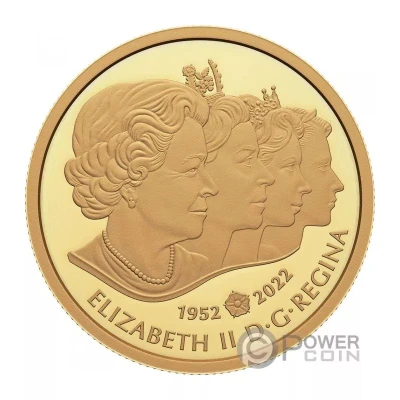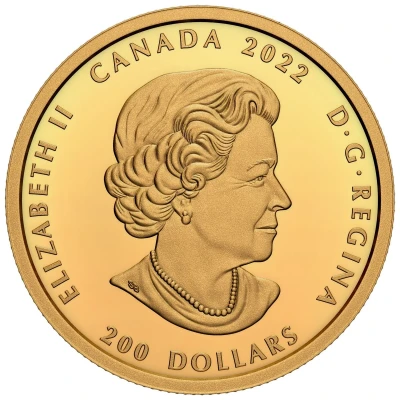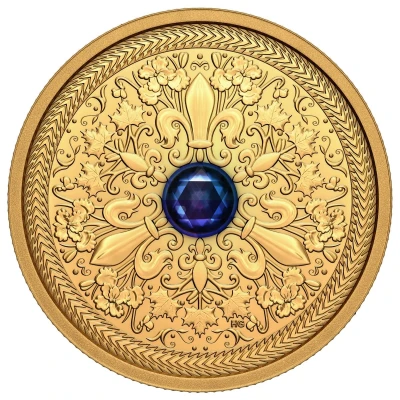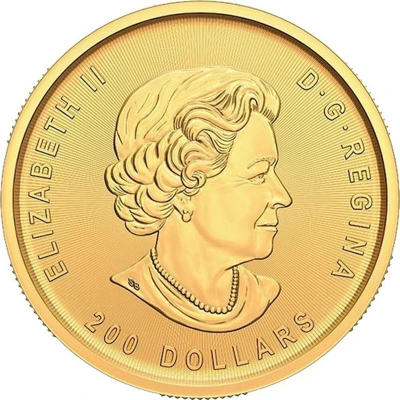
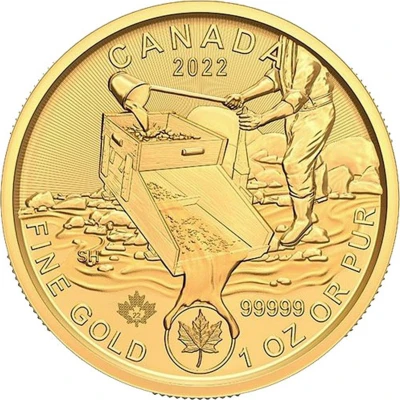

© JM Bullion
200 Dollars - Elizabeth II Prospecting for Gold
2022 year| Gold (.99999) | 31.11 g | 30 mm |
| Issuer | Canada |
|---|---|
| Queen | Elizabeth II (1952-2022) |
| Type | Non-circulating coin |
| Year | 2022 |
| Value | 200 Dollars 200 CAD = USD 148 |
| Currency | Dollar (1858-date) |
| Composition | Gold (.99999) |
| Weight | 31.11 g |
| Diameter | 30 mm |
| Thickness | 2.87 mm |
| Shape | Round |
| Technique | Milled |
| Orientation | Medal alignment ↑↑ |
| Updated | 2024-10-04 |
| Numista | N#330163 |
|---|---|
| Rarity index | 95% |
Reverse
A miner working with a sluice box.
Script: Latin
Lettering:
CANADA
2022
SH
22 99999
FINE GOLD 1 OZ OR PUR
Designer: Steve Hepburn
Edge
Segmented reeding
Comment
Various bullion and bullion coins are sold through certain dealers. The retail price of bullion products is based on international market prices for gold, silver and platinum, which fluctuate daily. Unless otherwise indicated, bullion coins do not have a fixed mintage.In the Klondike, the easiest way for gold miners to find gold was by panning. Bonanza Creek (formerly Rabbit Creek) and Eldorado Creek contained the most nuggets; most of the gold was buried near bedrock. To reach it, prospectors had to dig a shaft into the permanently frozen gravel (permafrost), then tunnel horizontally, a process known as hillside mining. Miners used this method in winter, when the rich gold-bearing gravel was brought to the surface and piled up until spring.
After the spring thaw, sluices were filled with this gold-bearing gravel, and the sludge and gravel were removed with water. The much denser gold (19 times heavier than water) was caught by riffles at the bottom of the sluices. The cradle was another popular choice for maneuvering when water was not available in sufficient quantities, as in the mining claims on the hills overlooking Bonanza and Eldorado creeks. Water was poured into the upper part, and a rocking motion was created to separate the gravel from the gold, which was held by riffles at the bottom of the cradle. The water was generally collected and recycled many times.
These methods helped shape the Yukon's popular image as a mining frontier, and placed Canada among the world's top gold producers during the Klondike Gold Rush, after which the territory joined Confederation in 1898. They also altered the region's landscape and environment. The influx of gold seekers had a profound impact on the native communities whose territories overlapped with the present-day Yukon, forever disrupting their traditional way of life. The effects of the gold rush, for better or for worse, are still felt in Canada today.
Special features
The SECOND coin in the new Klondike Gold Rush series, struck in one ounce of 99.999% pure gold.
A design of unprecedented precision created by the Royal Canadian Mint's engravers.
Made from 99.999% pure gold, the highest gold purity in the world, and in accordance with the Royal Canadian Mint's high quality standards.
The field of the coin contains a laser-etched maple leaf. In the center of this mark is the number "22", visible through a magnifying glass, indicating the year of issue.
Pocket-sized packaging for easy handling and storage.
Signed by the Mint's chief assayer, the titling certificate on the back of the card guarantees the coin's authenticity and purity.
Highest face value ($200 CDN) of all 1 oz. gold bullion coins.
Not a fixed mintage.
Interesting fact
One interesting fact about the "Prospecting for Gold" coin is that it features a unique reverse design that showcases a prospector panning for gold in a river, surrounded by the beautiful Canadian wilderness. The design is so detailed that you can even see the individual ripples in the water and the prospector's reflection in the river. This coin is truly a work of art that captures the spirit of adventure and exploration that defines Canada's history and culture.
